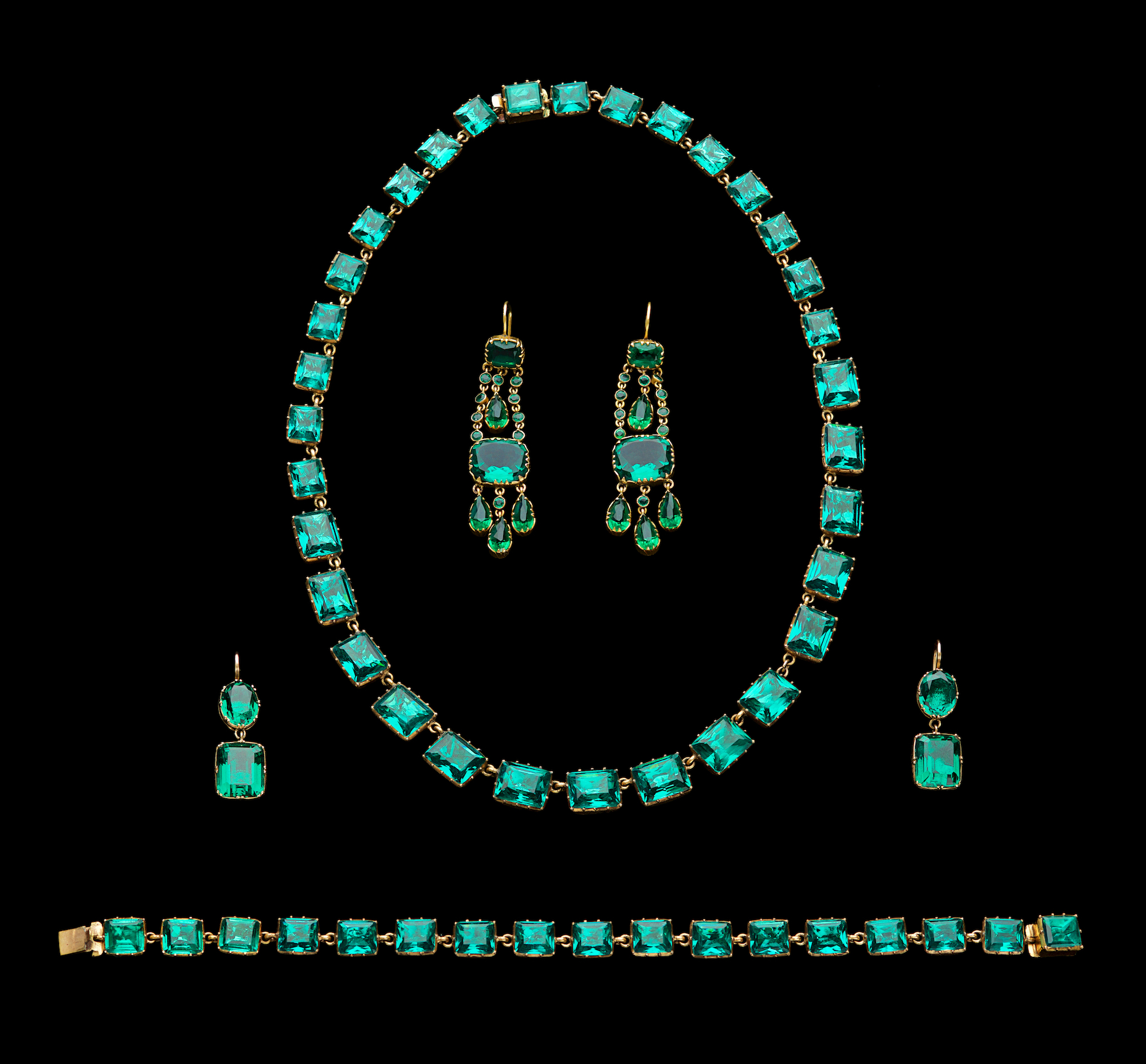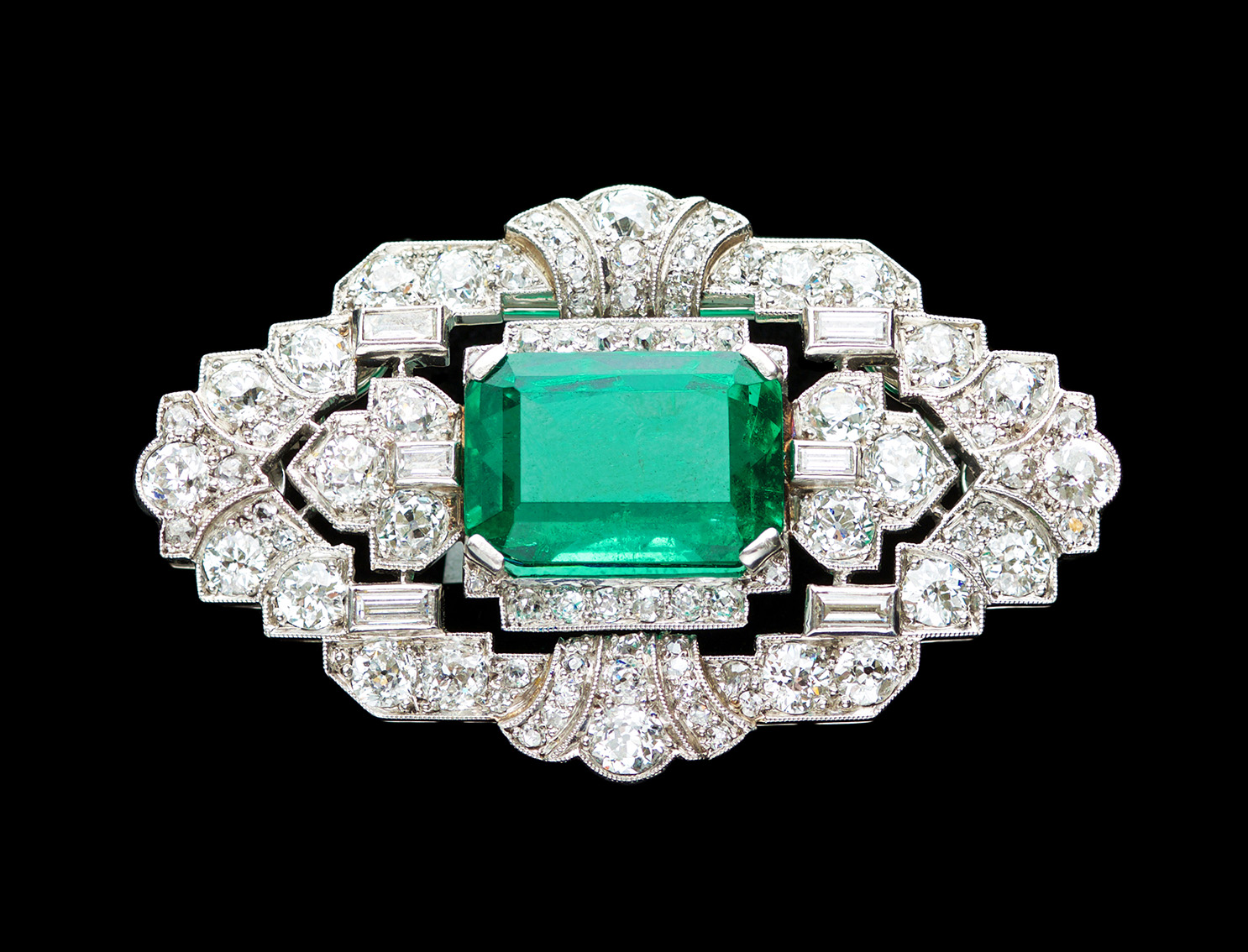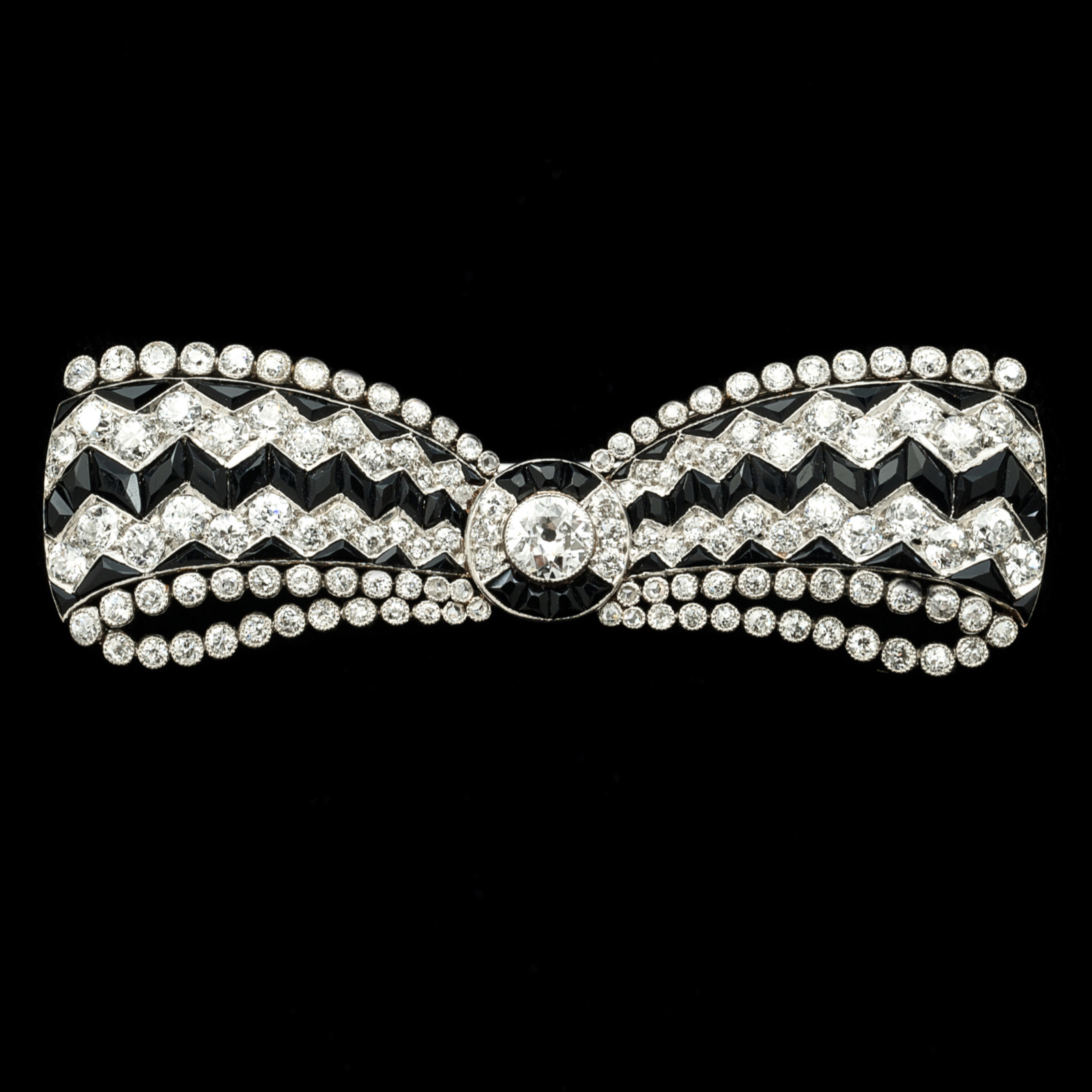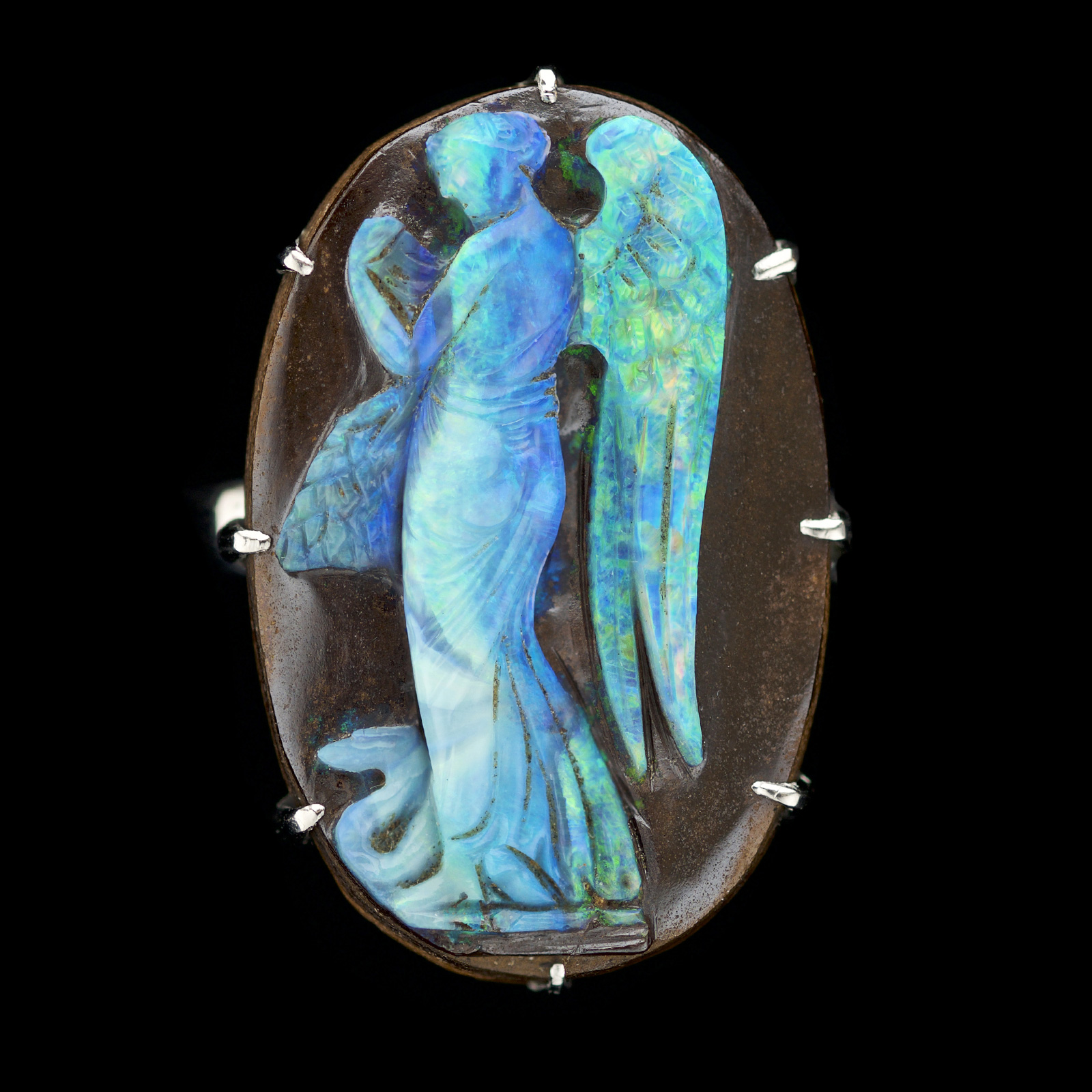Intaglios & Cameos
Showing all 13 results
-
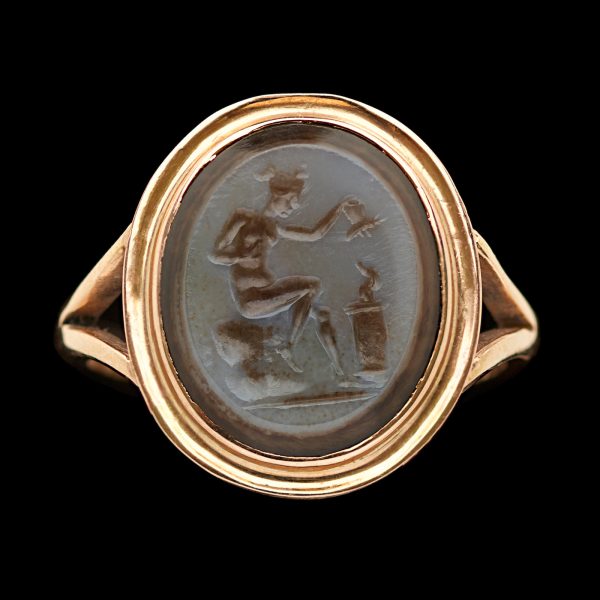
Sardonyx intaglio ring with the figure of a seated Aphrodite
$9,000 inc. GST -
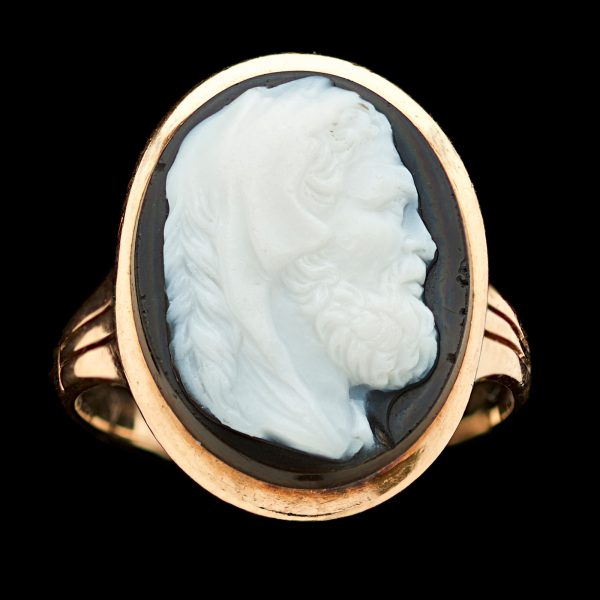
Georgian cameo ring carved with the bearded head of Hercules
$7,500 inc. GST -
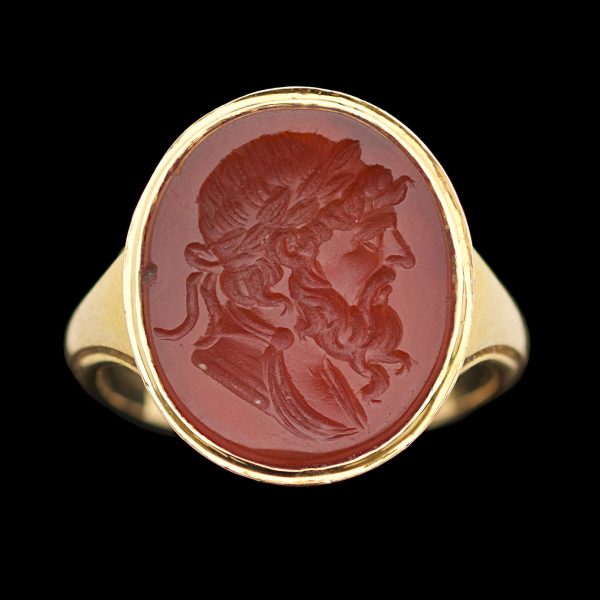
Georgian intaglio ring carved with the head of Zeus
$12,000 inc. GST -
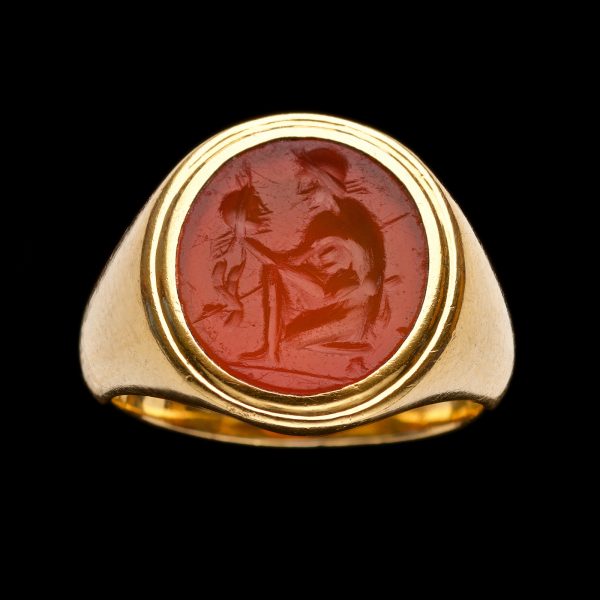
Roman cornelian intaglio
$14,000 inc. GST -
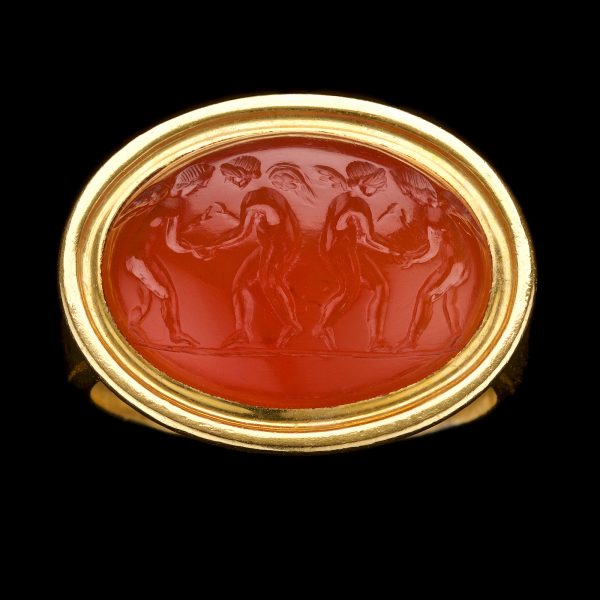
Cornelian intaglio carved with four dancing angels
$22,000 inc. GST -
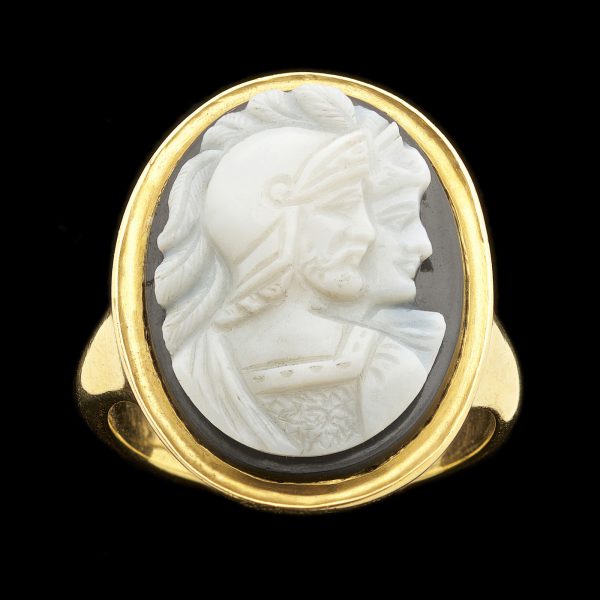
Georgian onyx cameo ring c. 1820
$10,000 inc. GST -
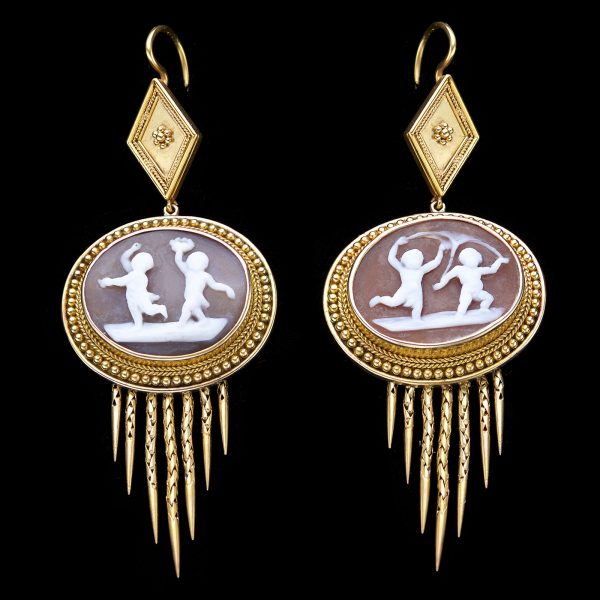
Neo-classical cherub cameo earrings
$6,500 inc. GST -
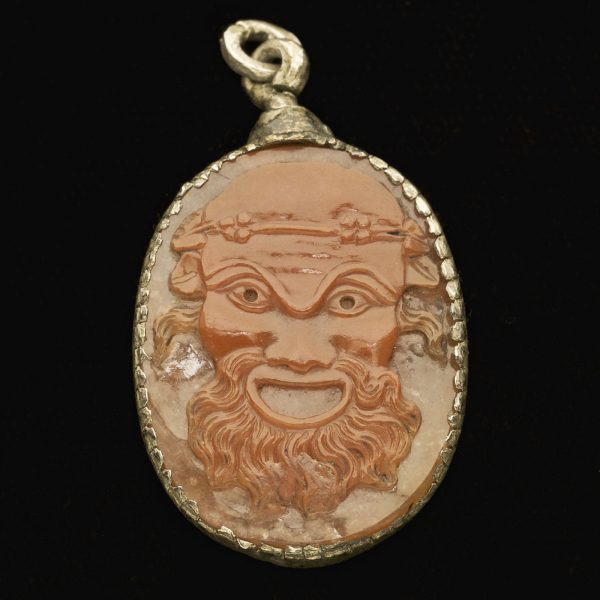
Ancient Roman Dionysus pendant
$12,000 inc. GST -
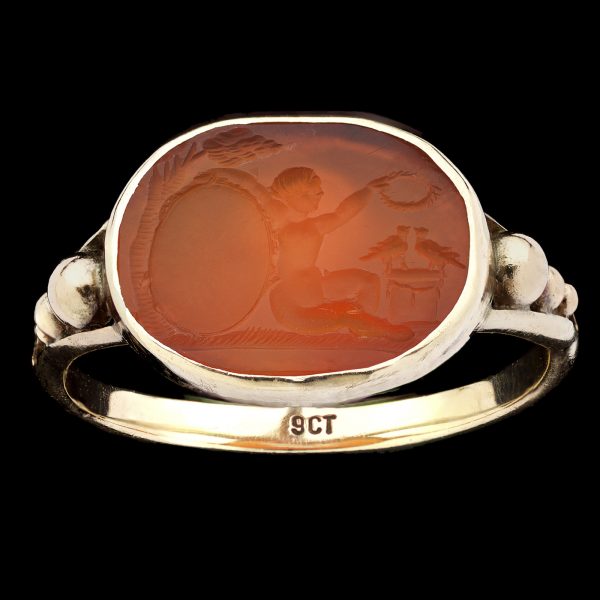
Georgian cornelian Eros intaglio
$7,000 inc. GST -
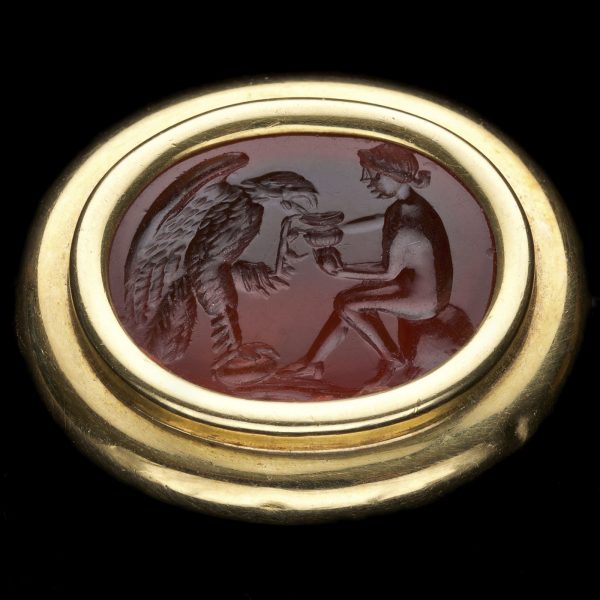
Neo Classical cornelian Hebe & eagle intaglio brooch. c.1800
$8,000 inc. GST -
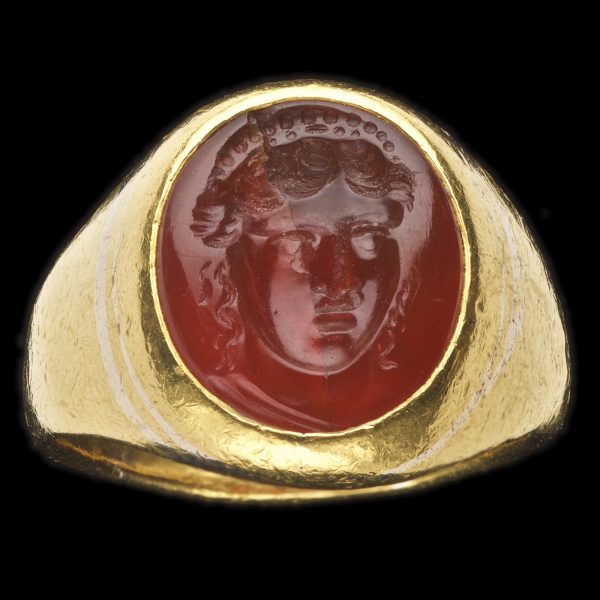
Ancient Roman cornelian maenad intaglio ring. 1st century AD.
$8,000 inc. GST -
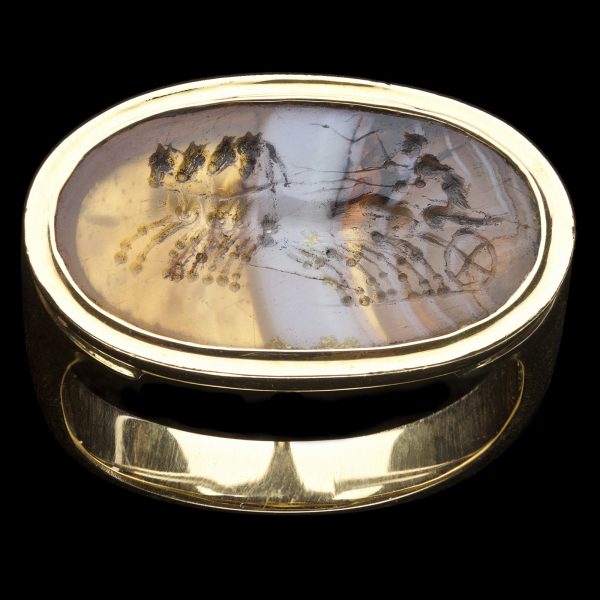
Ancient Roman intaglio carved with a charioteer driving a quadriga 1st century BC.
$12,000 inc. GST -
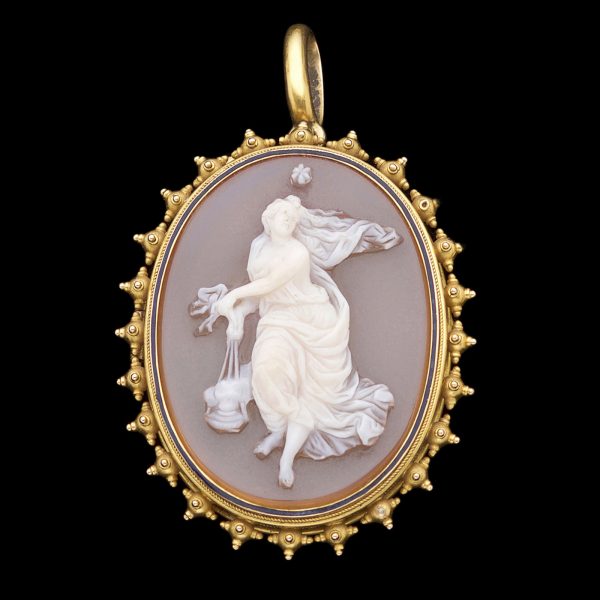
Sardonyx Vesta cameo & gold pendant c.1884
$8,500 inc. GST
Antique Paste Jewellery
My interest in antique paste jewellery goes back to the 1980’s when I purchased a demi- parure set with foiled amethyst paste stones set in cut down gilt settings. I loved the simplicity of the design and the brilliance of the coloured stones.
It was an Englishman, George Ravenscroft, who is credited with introducing lead
Art Deco Treasures
We’re excited to share the news of a private collection of superb quality Art Deco jewels which has just arrived in time for Christmas.
Among it is a fabulous emerald pendant brooch by Collingwood & Co. Ltd., in its original case labelled ‘Jewellers to the Royal Family’…
The House of Cartier – Family business to International Brand
In 1847 Louis Cartier opened a small jewellery store in Paris.
In 1870 his son Alfred assumed leadership and organised the first exhibition in London.
In I898 his son Louis joined his father Alfred.
In 1898 Alfred’s sons Pierre and Jacques joined the company.
In 1899 the store moved to 13 Rue de la Paix, Paris.
Mourning Jewellery
The 20th century Irish born artist Francis Bacon had a very simple view of mortality; “You live, you die. That’s it,”
This may be seen as a very bleak view of one of life’s inevitabilities, but in past centuries, before the development of medical science, death was omnipresent.
Opals: Australia’s ‘Rainbow’ Gems
I recently acquired a striking opal cameo set in silver as a ring. Depicting Nike, the goddess of Victory in Greek mythology, it has been attributed to the celebrated German gem carver Wilhelm Schmidt (1845-1938) and dated circa 1880.

